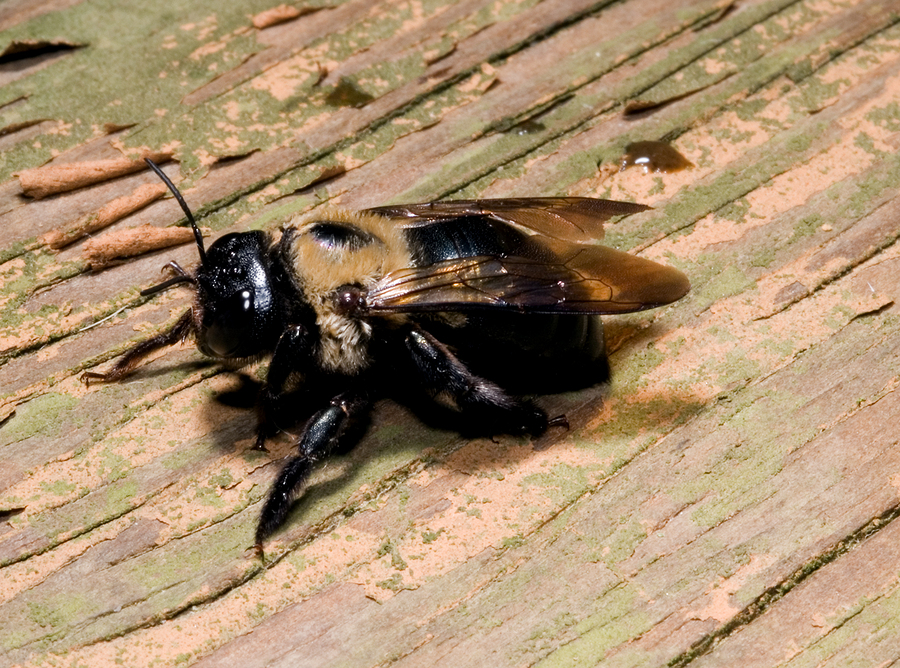READY TO GET STARTED?
REQUEST A FREE ESTIMATE
Fill out the form below or call (888) 466-7849 for a free, no-obligation estimate.

Carpenter bees are often mistaken for bumble bees, as they are similar in size and color, and are frequently seen in the spring hovering around the eaves of a house or under decks or porch rails.
½-1″ long
Robust appearance
Thorax is fuzzy and yellow, abdomen is a shiny black color
Males have a white patch on the face
Carpenter bees make nests by tunneling into wood, usually with only one entry hole but several tunnels within
Entry holes are usually perfectly circular, about 16mm in length (.63 inches)
Do not eat wood; it’s discarded or re-used to build partitions within tunnels (leaving sawdust on surfaces beneath the nest)
Feed on plant nectar
Homes with wooden decks, eaves, or other areas of exposed wood are likely targets for carpenter bee damage
Males do not have stingers but can be aggressive to other bees, animals, or people near the nest
Females can sting but rarely do unless agitated
Galleries can be treated with an insecticidal dust
Galleries should be sealed in the fall (when they are no longer active)
Untreated wood should be painted or sealed to discourage nesting behaviors
Bees are protected as pollinators, so treatment is only enacted when the bees are deemed a nuisance
M-F 7:30AM – 5:30PM
Saturday 9AM – 1PM